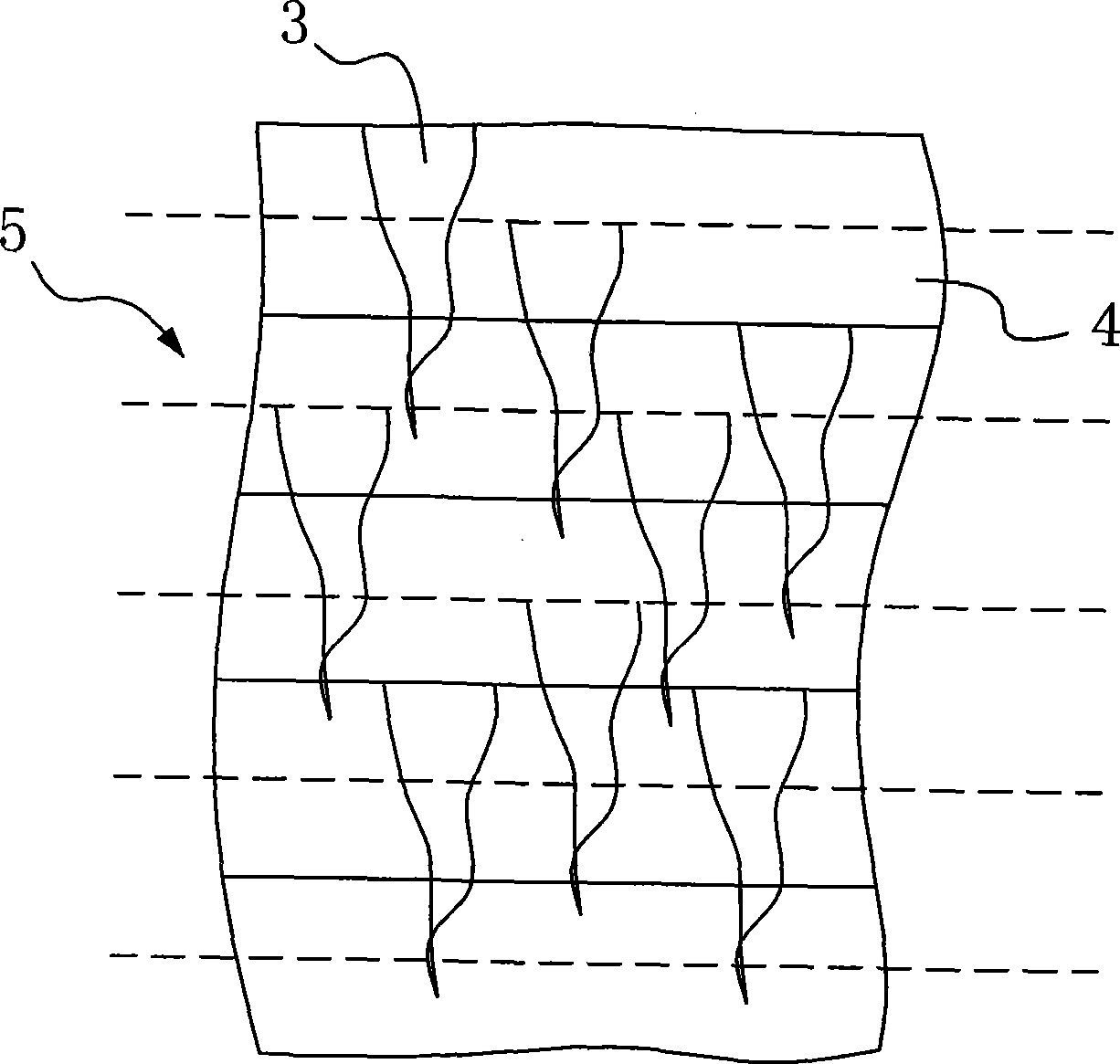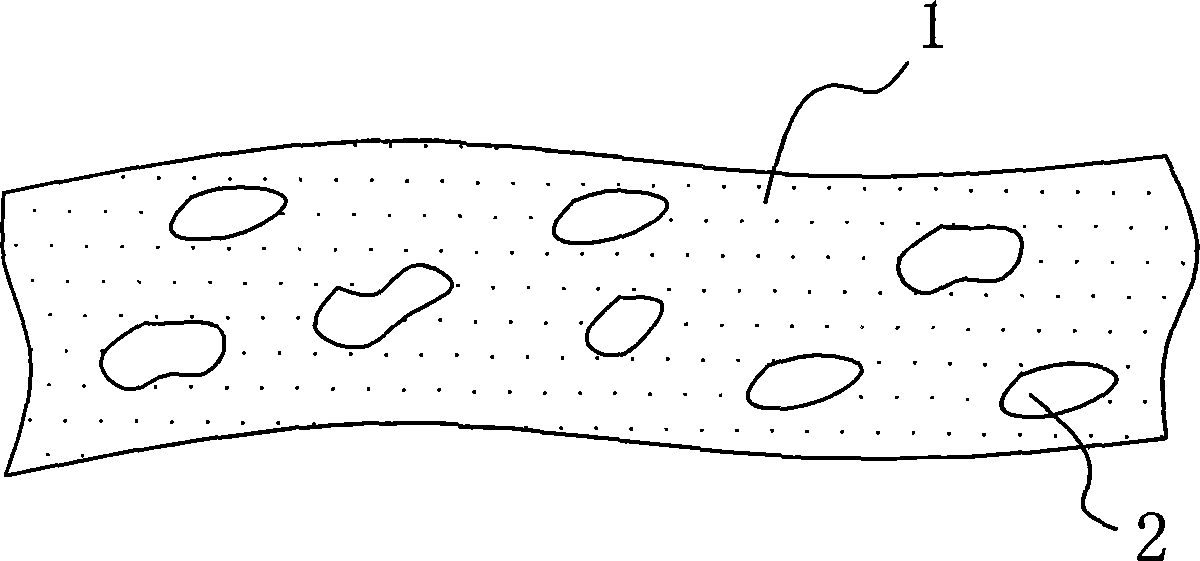Degradable chitosan biomembrane as well as preparation method and application thereof
A biofilm and chitosan technology, applied in the field of biomedical materials, can solve the problems of the inability to exert the characteristics of the biofilm, the inability to use the cell scaffold, and the reduction of the strength of the biofilm, and achieve good natural antibacterial properties and biocompatibility. Sexuality, good economic and social benefits, and the effect of preventing congestion and necrosis
- Summary
- Abstract
- Description
- Claims
- Application Information
AI Technical Summary
Problems solved by technology
Method used
Image
Examples
Embodiment 1
[0042] Such as figure 2 As shown, a degradable chitosan biofilm comprises a multi-layered structure obtained after decalcification, deproteinization and deacetylation of a complete crab shell, which can be torn off sequentially. A transparent or translucent colorless chitosan multilayer structure film body frame 5 has a plurality of unevenly distributed natural micropores 3 along the thickness and width direction of the chitosan multilayer structure film body frame 5, so The chitosan multilayer structure membrane body frame 5 has a thickness of 1 μm to 12 μm, and the natural micropores 3 have a pore diameter of 1 μm to 50 μm.
[0043] Preparation method: Weigh 50 g of washed and dried Alaska snow crab shells, decalcify with 5% HCl solution with a mass fraction of 10%, and decalcify at 30°C, soak for 1 hour each time, repeat twice, and wash with water twice to medium Sex, then dehydration. Then use 8% NaOH solution and heat in a water bath at 40° C. for 4 hours to deproteini...
Embodiment 2
[0049] Weigh 20 g of crab shells washed and dried, decalcify 3 times with 6% HCl solution, bath ratio 10%, 30° C., soak for 4 hours each time, repeat 3 times after changing the liquid, and wash with water until neutral. Then use 10% NaOH solution and heat in a water bath at 50° C. for 6 hours to deproteinize to obtain a biodegradable chitin biofilm. Then use 12% NaOH solution to deacetylate by heating in a water bath at 99°C for 18 hours to prepare a biodegradable chitosan biofilm. Soak the chitin biofilm or chitosan biofilm in soft water for 4 hours, quickly decompress and stratify, and use a rapid decompression device to make the pressure on the chitosan biofilm from 1 to 12 MPa within 0.01 to 0.1 seconds Rapidly drop to 0.1MPa, and then tear off the chitosan biofilm of corresponding thickness by means of manual splitting. Can produce transparent biofilm or translucent biofilm. With 0.8% KMnO 4 solution, with a bath ratio of 10%, soaked at 60° C. for 6 hours for decoloriz...
Embodiment 3
[0051] Wash the hairy crab shells, decalcify with 7% HCl solution, power 1000w, ultrasonic for 180s, repeat 3 times. After washing, use 12% NaOH by mass fraction, heat in a water bath at 100°C for 16 hours, deproteinize, and then wash with water until neutral to obtain a degradable chitin biofilm; use 15% NaOH by mass fraction for this degradable chitin biofilm solution, deacetylated by heating in a water bath at 100°C for 24h, and then washed to neutrality to obtain a chitosan biofilm; 4 Soak in the solution for 6 hours to decolorize, then apply 5% HCl solution and 10% NaOH solution successively and put them in a microwave oven for 6 minutes, and then perform secondary decalcification and deproteinization treatments respectively. Through the method of embodiment 1, 2, the transparent or translucent chitosan biofilm that thickness is 12 μ m, and pore is 50 μ m is prepared by rapid decompression and manual splitting method.
PUM
| Property | Measurement | Unit |
|---|---|---|
| thickness | aaaaa | aaaaa |
| pore size | aaaaa | aaaaa |
| diameter | aaaaa | aaaaa |
Abstract
Description
Claims
Application Information
 Login to View More
Login to View More - R&D
- Intellectual Property
- Life Sciences
- Materials
- Tech Scout
- Unparalleled Data Quality
- Higher Quality Content
- 60% Fewer Hallucinations
Browse by: Latest US Patents, China's latest patents, Technical Efficacy Thesaurus, Application Domain, Technology Topic, Popular Technical Reports.
© 2025 PatSnap. All rights reserved.Legal|Privacy policy|Modern Slavery Act Transparency Statement|Sitemap|About US| Contact US: help@patsnap.com


